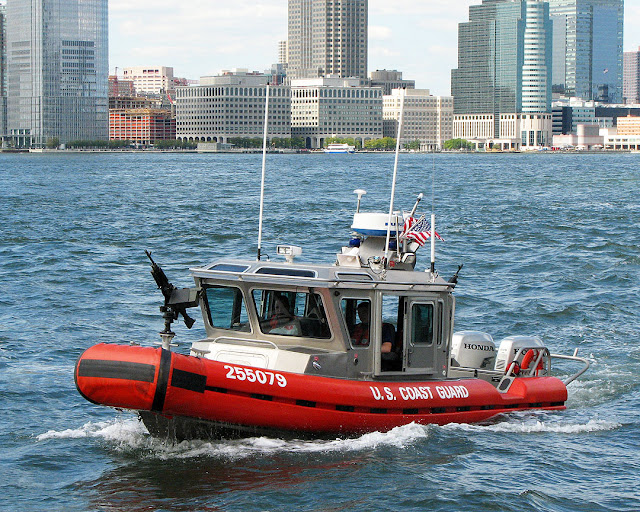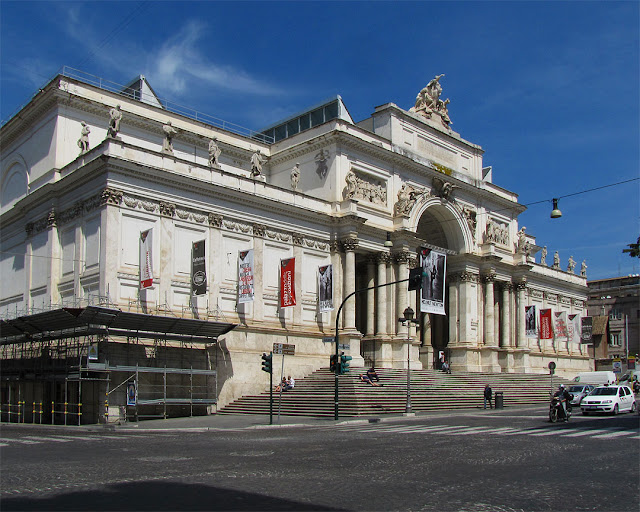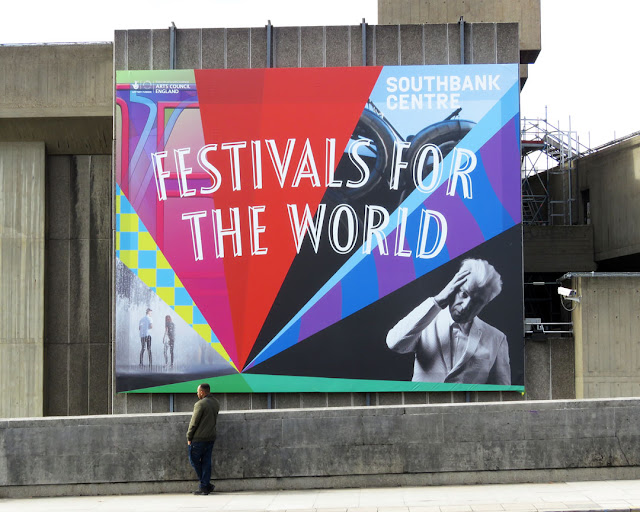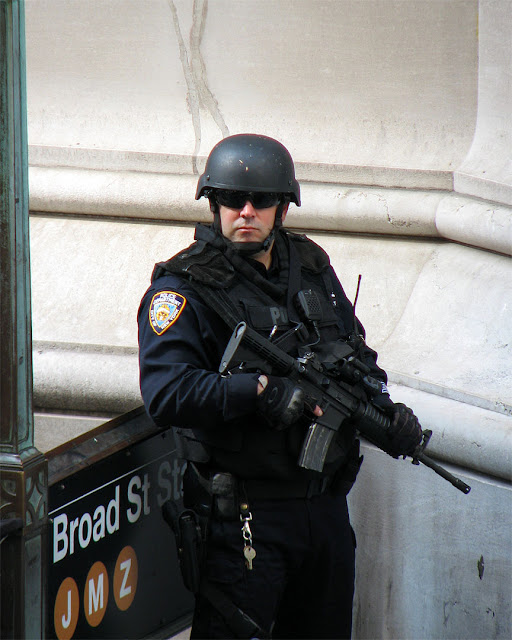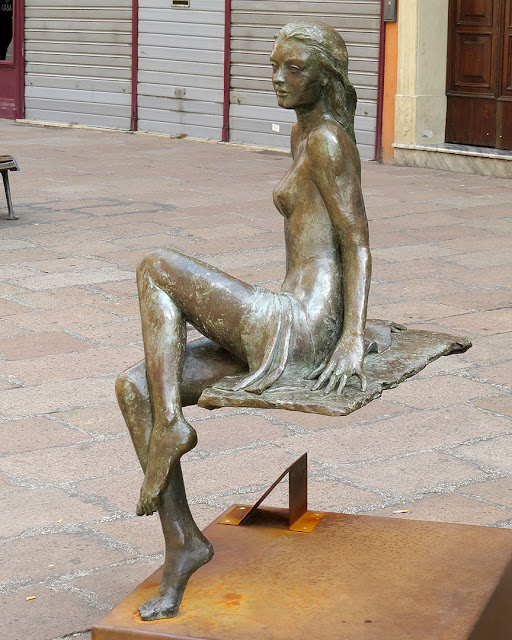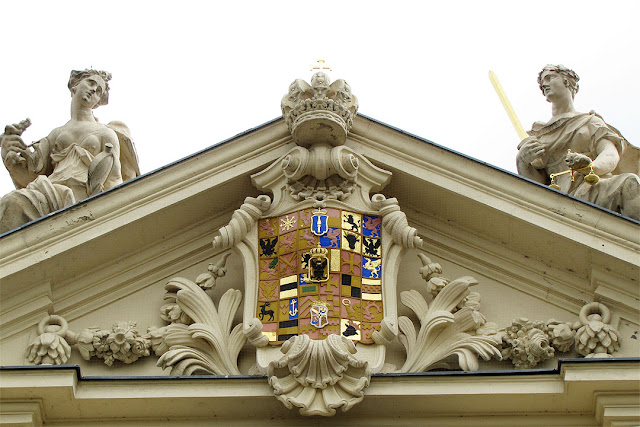Wednesday, August 31, 2016
King Philip IV of Spain
King Philip IV of Spain by Gian Lorenzo Bernini and and Girolamo Lucenti, 1666
Basilica di Santa Maria Maggiore
Piazza di Santa Maria Maggiore
Rome, April 2013
“In front of the entrance to the basilica of S. Maria Maggiore, at the right side of Ferdinando Fuga's portico, stands an over-life-sized bronze statue of Philip IV of Spain. El Rey Planeta, the Planet King, appears as a powerful military leader, dressed in antique cuirass, military cloak and boots, holding a scepter in his outstretched right hand and resting his left hand on the hilt of his sword. He stands in an exaggerated contrapposto and turns his head to his right, directing his gaze beyond the raised scepter as if he were about to utter a command. Philip is represented as a heroic figure, a warrior-king and guardian of the Church. From its conspicuous location in the basilica, even the casual observer can infer that this imposing statue occupies an important place in the public image of S. Maria Maggiore.” (Steven F. Ostrow, Gianlorenzo Bernini, Girolamo Lucenti, and the Statue of Philip IV in S. Maria Maggiore)
Tuesday, August 30, 2016
Coast Guard
An USCG Defender Class Boat on patrol
Hudson River
New York, September 2007
“Originally developed as a replacement for 300 shore based non-standard boats, the RB-S became the platform to increase the long term HLS capability at shore stations in the wake of September 11, 2001. The RB-S is very similar to the rapidly procured RB-HS boat, but with dozens of improvements to include a reinforced bow, full shock mitigating seating, larger cabin and LED navigation lights. Over 540 RB-S were produced between 2002 and 2009, and they are assigned all over the Coast Guard at sectors, stations, MSRT/MSSTs, MSUs, training centers, and some AUXFACs. As some RB-S near the end of their 10-year service life, they will be replaced with the RB-S II starting in 2012.” (25-Foot Defender Class Boat, United States Coast Guard)
Monday, August 29, 2016
Assumption of Mary
Assunzione di Maria (Assumption of Mary) by Domenico Parodi
Santa Maria di Castello
Salita di Santa Maria di Castello
Genoa, April 2016
Sunday, August 28, 2016
Rossini
The now empty tomb of Gioacchino Rossini (1792-1868)
Cimetière du Père-Lachaise, (Père Lachaise Cemetery)
Quartier du Père-Lachaise, 20th arrondissement
Paris, July 2014
“He died at the age of 76 from pneumonia at his country house at Passy on Friday, 13 November 1868. He was buried in Père Lachaise Cemetery in Paris, France. In 1887, his remains were moved to the Basilica of Santa Croce, Florence, at the request of the Italian government.” (Gioacchino Rossini, Wikipedia)
Saturday, August 27, 2016
Friday & Robinson Crusoe
Friday and Robinson Crusoe on a 19th century French clock
Galleria Palatina, Palazzo Pitti
Florence, May 2016
Friday, August 26, 2016
Empty Lot
Assembling “Empty Lot” by Abraham Cruzvillegas, 2015
Turbine Hall, Tate Modern
Bankside, Southwark
London, September 2015
“In 2015, Cruzvillegas accepted the Tate Modern Turbine Hall commission; his work, 'Empty Lot' is on display between 13th October 2015 and 3rd April 2016.[14] The work consists of 240 wooden triangular plots bordered with wooden frames, filled with 23 tonnes of soil collected from different parks and gardens across London (including Hackney Marshes, Peckham Rye, the Horniman Museum and Buckingham Palace). The entire work is raised on two large stepped, triangular scaffolded platforms, overlooked by growing light, and interspersed with smaller sculptural works.” (Abraham Cruzvillegas, Wikipedia)
Thursday, August 25, 2016
Bowl of Hygieia
Old public lamp with the Bowl of Hygieia outside a pharmacy
On the corner of Via Cesare Battisti with Via Porta Nova
Bologna, June 2015
“Bowl of Hygieia is one of the symbols of pharmacy. Hygieia was the Greek goddess of hygiene, and the daughter of Asclepius. Asclepius' symbol is his rod, with a snake twined around it; correspondingly, Hygieia's symbol is a cup or chalice with a snake twined around its stem and poised above it.” (Bowl of Hygieia, Wikipedia)
Wednesday, August 24, 2016
Nikolai Masalov
Soviet soldier by Yevgeny Vuchetich (Евгений Вучетич)
Sowjetisches Ehrenmal (Soviet War Memorial)
Treptower Park, Treptow-Köpenick
Berlin, September 2011
“The focus of the ensemble is a monument by Soviet sculptor Yevgeny Vuchetich: a 12-m tall statue of a Soviet soldier with a sword holding a German child, standing over a broken swastika. According to Marshal of the Soviet Union Vasily Chuikov, the Vuchetich statue commemorates the deeds of Sergeant of Guards Nikolai Masalov, who during the final storm on the center of Berlin risked his life under heavy German machine-gun fire to rescue a three-year-old German girl whose mother had apparently disappeared.” (Soviet War Memorial, Treptower Park, Wikipedia)
Tuesday, August 23, 2016
Monday, August 22, 2016
Notre-Dame d'Espérance
Notre-Dame d'Espérance by Bruno Legrand and Jean-Luc Le Roy, 1997
Rue de la Roquette / rue du Commandant-Lamy
Quartier de la Roquette, 11th arrondissement
Paris, July 2006
Sunday, August 21, 2016
Palazzo delle Esposizioni
Palazzo delle Esposizioni by Pio Piacentini, 1893
Via Nazionale
Rome, April 2013
“The Palazzo delle Esposizioni is a neoclassical exhibition hall, cultural center and museum on Via Nazionale in Rome, Italy. Designed by Pio Piacentini, it opened in 1883. It has housed several exhibitions (e.g. Mostra della Rivoluzione Fascista, Mostra Augustea della Romanità), and was temporarily modified during the fascist era due to its style being thought to be out of step with the times. The building is owned by the City of Rome and the museum is administered by Azienda Speciale Palaexpo, an agency run by the City's Office for Education and Culture. It has a 139-seat cinema, a 90-seat auditorium, a cafe, a large 240 person restaurant, a library and a multi-functional room known as the Forum.” (Palazzo delle Esposizioni, Wikipedia)
Saturday, August 20, 2016
Friday, August 19, 2016
Matitone
The Matitone (Big Pencil, officially San Benigno North Tower), 1992
By Skidmore, Owings & Merrill, Mario Lanata and Andrea Messina
Via di Francia
Genoa, April 2016
“The Matitone (officially San Benigno North Tower) is a skyscraper designed by Skidmore, Owings & Merrill, Mario Lanata and Andrea Messina and finished building in 1992, used as a business center located in the district of San Teodoro, in the San Benigno neighborhood, near the Genova-West highway.” (Matitone, Wikipedia)
Thursday, August 18, 2016
Jerusalemkirche
Jerusalem Church by Sigrid Kressmann-Zschach, 1968
Lindenstraße
Berlin, September 2011
“Jerusalem Church (German: Jerusalemskirche, Jerusalemkirche or Jerusalemer Kirche) is one of the churches of the Evangelical Congregation in the Friedrichstadt (under this name since 2001), a member of the Protestant umbrella organisation Evangelical Church of Berlin-Brandenburg-Silesian Upper Lusatia. The present church building is located in Berlin, borough Friedrichshain-Kreuzberg, in the quarter of Friedrichstadt. Jerusalem Church is fourth in rank of the oldest oratories in the town proper (except of suburbs incorporated in 1920, which are partly older).” (Jerusalem Church, Berlin, Wikipedia)
Wednesday, August 17, 2016
Perseo
“Perseo con la testa di Medusa” (Perseus with the Head of Medusa) by Benvenuto Cellini, 1545
Loggia dei Lanzi
Piazza della Signoria
Florence, May 2016
“Perseus with the Head of Medusa is a bronze sculpture made by Benvenuto Cellini in 1545. The sculpture stands upon on a square base with bronze relief panels depicting the story of Perseus and Andromeda, similar to a predella on an altarpiece.[1] It is located in the Loggia dei Lanzi of the Piazza della Signoria in Florence, Italy. The second Florentine duke, Duke Cosimo I de’ Medici, commissioned the work with specific political connections to the other sculptural works in the piazza. When the piece was revealed to the public on 27 April 1554, Michelangelo’s David, Bandinelli’s Hercules and Cacus, and Donatello’s Judith and Holofernes were already erected in the piazza” (Perseus with the Head of Medusa, Wikipedia)
Tuesday, August 16, 2016
Bataclan
Bataclan theatre by Charles Duval, 1864
Boulevard Voltaire
Quartier Saint-Ambroise, 11th arrondissement
Paris, July 2005
“The Bataclan is a theatre located at 50 Boulevard Voltaire in the 11th arrondissement of Paris, France. Designed in 1864 by the architect Charles Duval, its name refers to Ba-ta-clan, an operetta by Jacques Offenbach. Since the early 1970s, it has been a ‘legendary’ venue for rock music. On 13 November 2015, 89 people were killed in a coordinated terrorist attack in the theatre.” (Bataclan, Wikipedia)
Monday, August 15, 2016
St. Peter's Rooster
St. Peter's rooster, Pilatus' Courtyard
Basilica of Santo Stefano (Seven Churches)
Via Santo Stefano
Bologna, June 2015
“All four Canonical Gospels state that during Jesus' Last Supper with his disciples, he predicted that Peter would deny knowledge of him, stating that Peter would disown him before the rooster crowed the next morning. Following the arrest of Jesus Peter denied knowing him thrice, but after the third denial, heard the rooster crow and recalled the prediction as Jesus turned to look at him. Peter then began to cry bitterly.[2] This final incident is known as the Repentance of Peter.” (Denial of Peter, Wikipedia)
Sunday, August 14, 2016
Saturday, August 13, 2016
Cotonificio Veneziano
“Ali” (Wings) by Massimo Scolari, 1991
Istituto Universitario di Architettura di Venezia
(Former Santa Marta cotton mill)
Dorsoduro
Venice, September 2013
“The area is still noticeably less sleek than the centre, although fishing was superseded as a source of employment by the port long ago, and subsequently by the Santa Marta cotton mill - now stunningly converted into the Istituto Universitario di Architettura di Venezia. Massive redevelopment schemes were talked about for much of this downbeat district, with plans to revitalise it in a vast ‘university meets London Docklands’ style project, to a design by the late Catalan architect Enric Miralles. The plans included an auditorium, conference hall, restaurant and huge centralised university library, thus providing Venice's universities with something approaching a genuine campus. After various legal disputes, these ambitious schemes fell through and the two universities of Venice fell back on a more modest development plan, converting some of the ex-warehouses to classrooms and lecture halls; these constitute the Polo didattico San Basilio, which was inaugurated in March 2008.” (Time Out Venice)
Friday, August 12, 2016
Broad Street
NYPD officer on guard
Broad Street at Wall Street
Financial District, Lower Manhattan
New York, September 2008
Thursday, August 11, 2016
The Navy Band
The Navy band at the changing of the guard
Palazzo del Quirinale (Quirinal Palace)
Piazza del Quirinale
Rome, May 2011
“The Quirinal Palace (known in Italian as the Palazzo del Quirinale or simply Quirinale) is a historic building in Rome, Italy, one of the three current official residences of the President of the Italian Republic, together with Villa Rosebery in Naples and tenuta di Castelporziano. It is located on the Quirinal Hill, the highest of the seven hills of Rome. It has housed thirty Popes, four Kings of Italy and twelve presidents of the Italian Republic. The palace extends for an area of 110,500 square metres and is the ninth largest palace in the world in terms of area. By way of comparison, the White House in the United States is one-twentieth of its size.” (Quirinal Palace, Wikipedia)
Wednesday, August 10, 2016
Francisco de Miranda
General Francisco de Miranda by Arturo Ruza, 1982
Square de l'Amérique-Latine
Place de la Porte-de-Champerret
Quartier des Ternes, 17th arrondissement
Paris, July 2012
“Sebastián Francisco de Miranda y Rodríguez de Espinoza (March 28, 1750 – July 14, 1816), commonly known as Francisco de Miranda (Spanish pronunciation: [fɾanˈsisko ðe miˈɾanda]), was a military leader and Venezuelan revolutionary. Although his own plans for the independence of the Spanish American colonies failed, he is regarded as a forerunner of Simón Bolívar, who during the Spanish American wars of independence successfully liberated much of South America. Miranda led a romantic and adventurous life.” (Francisco de Miranda, Wikipedia)
Tuesday, August 9, 2016
Garibaldi in Genoa
Equestrian statue of Giuseppe Garibaldi by Augusto Rivalta, 1893
Piazza De Ferrari
Genoa, April 2016
Monday, August 8, 2016
Admiralspalast
Detail of the facade, Admiralspalast (Admiral Palace), 1910
Friedrichstraße
Berlin, September 2011
“The Admiralspalast, the Admiral Palace, is a theatre in the Mitte district of Berlin, Germany, located on Friedrichstraße No. 101. Opened in 1910, it is one of the few preserved variety venues of the pre-World War II era in the city. As a place of amusement the Admiralspalast originally included a skating rink, a public bath, bowling alleys, a café and a cinema open day and night. After World War I it turned to a revue theatre, starting with the show Drunter und drüber by Walter Kollo, later continued by the performance of operettas. As the building suffered little damage from World War II bombing, it was home to the Berlin State Opera until the reconstruction of the opera house in 1955. On April 21-22 1946 the Social Democratic Party of Germany and the Communist Party of Germany in the Soviet occupation zone held a convention at the Admiralspalast where they merged to become the Socialist Unity Party of Germany.” (Admiralspalast, Wikipedia)
Sunday, August 7, 2016
Saturday, August 6, 2016
The Towering Shard
The towering Shard of Glass
London Bridge Street, Southwark
London, September 2015
“The Shard's construction began in March 2009; it was topped out on 30 March 2012 and inaugurated on 6 July 2012. Practical completion was achieved in November 2012. The tower's privately operated observation deck, the View from the Shard, was opened to the public on 1 February 2013. The glass-clad pyramidal tower has 72 habitable floors, with a viewing gallery and open-air observation deck on the 72nd floor, at a height of 244.3 metres (802 ft). It was designed by the Italian architect Renzo Piano and replaced Southwark Towers, a 24-storey office block built on the site in 1975. The Shard was developed by Sellar Property Group on behalf of LBQ Ltd, and is jointly owned by Sellar Property and the State of Qatar.” (The Shard, Wikipedia)
Friday, August 5, 2016
Red Numbers
“Mural” on a rolling shutter
Via dei Pandolfini 48 red
Florence, May 2016
“Finding an address in Florence can be confusing. It has a unique address system with two number systems running side by side. Generally speaking, residences have a number in black or blue, while businesses have numbers in red (rosso in Italian), which is usually written with a little 'r' following the number. This gets confusing not only when the same number appears twice on the street (in red or in black) but also when you are trying to find an address and the door numbers appear mixed up. For example, the office address of Walkabout is Via dei Neri, 30/32r (red) to signify a business and it is next door to number 6 (in blue on a white background), which is a residence.” (Red and black street numbers in Florence, Walkabout)
Thursday, August 4, 2016
Wednesday, August 3, 2016
Funicolare Zecca–Righi
Funicolare Zecca–Righi (Zecca–Righi funicular)
Largo della Zecca
Genoa, April 2016
“The line was originally built as a two-section funicular, with passengers transferring between the two sections at the station of San Nicola. The upper section opened in 1895 and was constructed in the open, with three intermediate stations at Madonnetta, Via Preve and San Simone, as well as the section terminals at San Nicola and Righi. The lower section opened in 1897 and was entirely in tunnel, except for its terminals and the single intermediate station at Carbonara. Between 1963 and 1965, the line was completely rebuilt as a single section funicular, with a passing loop at San Nicola and retaining all the existing stations. In 1990, the line was again rebuilt, with longer trains and platforms, and an increased haulage speed.” (Zecca–Righi funicular, Wikipedia)
Tuesday, August 2, 2016
Collegienhaus
Collegienhaus, now part of the Jewish Museum
Lindenstraße, Kreuzberg
Berlin, September 2011
“A Kammergericht was first mentioned in 1468 as the ducal court of the Margraviate of Brandenburg, when it adjudicated in the chambers (German: Kammern) of the prince-electors. As the supreme court of Prussia it was since 1735 based at the Baroque Collegienhaus in the present-day Kreuzberg district. The Kammergericht housed the supreme courts and judges of the different territories ruled in personal union by the royal House of Hohenzollern, without formally merging the different juridical systems. By this concentration in one locality the later unification of the juridical systems was prepared. The Collegienhaus is today part of the Jewish Museum Berlin.” (Kammergericht, Wikipedia)
Monday, August 1, 2016
Subscribe to:
Posts (Atom)


